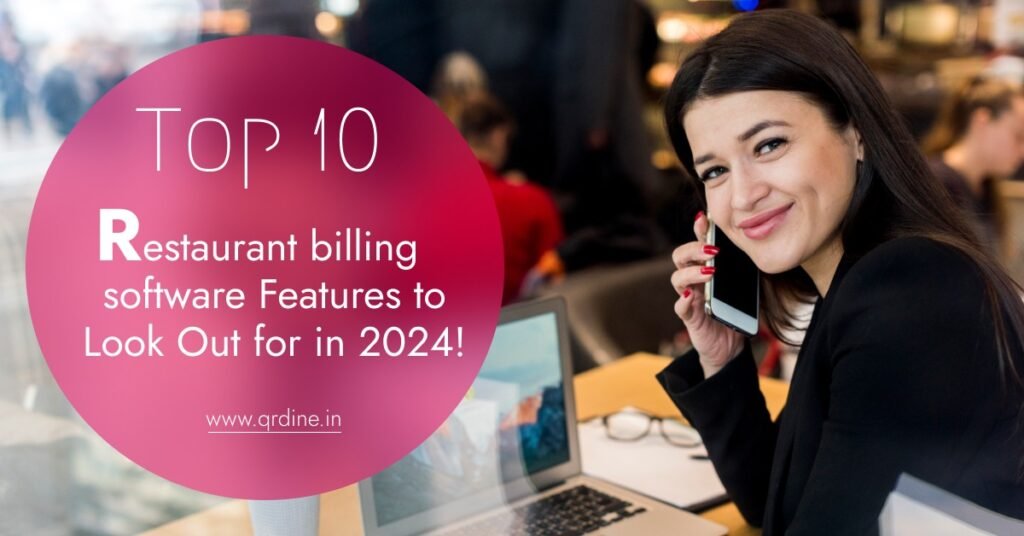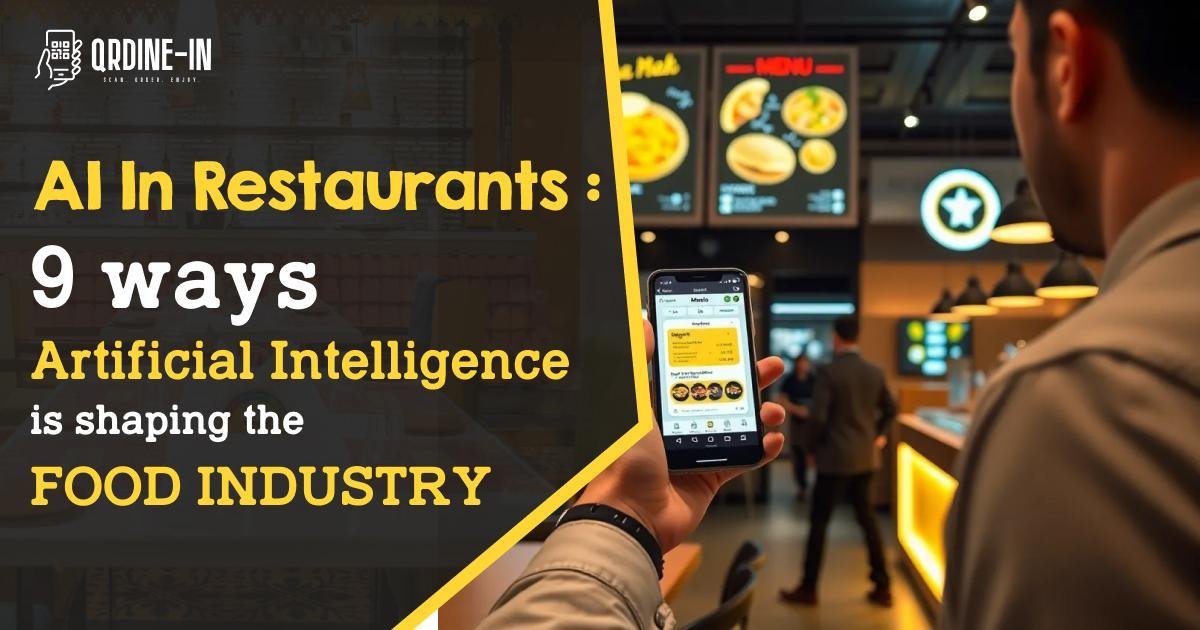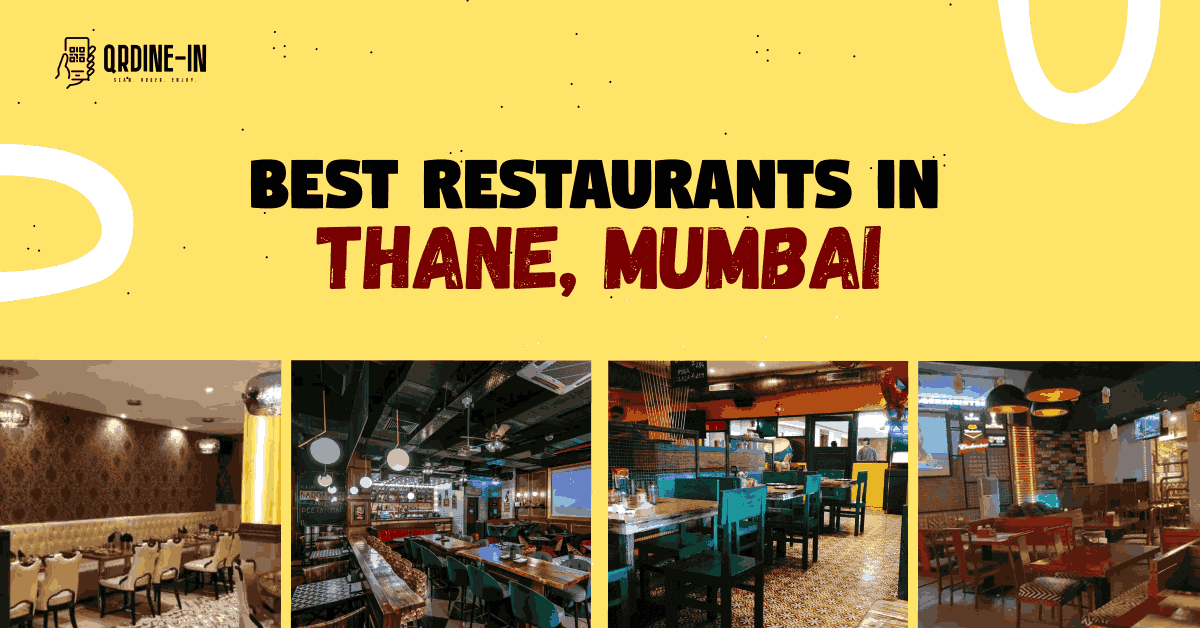
Table of Contents
Being one step ahead of the competition is crucial in the fast-paced world of the restaurant business. We are exploring Top 10 restaurant billing software Features to Look Out for in 2024! As 2024 approaches, technology developments will still be transforming the restaurant industry. An incredible Point of Sale (POS) system is one essential tool that is now required for any modern restaurant! A restaurant point of sale system (POS) is the solution to every issue, including inventory control, delivery platform connectivity, and restaurant billing.
We’ll examine the best restaurant POS features to watch out for in 2024 in this blog post. These features are intended to improve productivity, simplify processes, and offer patrons and employees an improved dining experience.
Make Sure This is Covered in Your Restaurant POS!
1. Infrastructure Based in the Cloud
Because cloud-based point-of-sale systems enable businesses to access their data at any time and from any location, they have completely changed the restaurant industry. This functionality will still be revolutionary in 2024.
Restaurant operators can access real-time sales data, remotely manage their inventory, and update their menus by implementing cloud-based infrastructure. Moreover, cloud-based solutions provide increased security, automated backups, and scalability in response to corporate expansion.
2. Billing for Restaurants
When it comes to restaurant billing and transaction administration, a point-of-sale (POS) system is an indispensable instrument. The restaurant billing procedure is made incredibly simplified and efficient with a POS system, which also lowers the possibility of errors and saves time. Waitstaff can enter orders straight into the restaurant billing system through the POS system, and the system will automatically compute the final bill, including taxes and any other fees.
In addition, the POS system’s integrated payment processing guarantees speedy and secure transactions, reducing the possibility of fraud or mistakes brought on by manual payment handling during restaurant billing.
3. Ordering at the table and kiosks for self-service
Tableside ordering and self-service kiosks are features of restaurant POS systems that help speed up the ordering procedure even more. Tableside ordering eliminates the requirement for paper tickets and lowers the possibility of error by enabling personnel to accept orders right at the table utilizing portable devices.
Customers may make orders and personalize their meals with self-service kiosks, which gives them greater control over their dining experience and shortens wait times during busy times.
4. Utilizing Delivery Platforms for Integration
In 2024, restaurants will need to integrate with delivery systems due to the increasing demand for meal delivery. Restaurants will be able to effectively handle and process incoming orders with the help of point-of-sale (POS) systems that seamlessly link with popular delivery applications like Zomato and Swiggy.
The connection improves the overall customer experience by streamlining processes, doing away with the need for manual order entry, and guaranteeing precise delivery tracking.
5. Analytics and Inventory Management
For restaurant proprietors, inventory management presents a continual challenge. Robust inventory management tools, such as automated stock alerts, real-time tracking, and ingredient-level inventory monitoring, will be available in advanced point-of-sale systems. These systems will also give restaurant owners access to comprehensive analytics and data that will assist them in understanding their best-selling products, popular ingredients, and profit margins.
Restaurant operators can make well-informed judgments about menu revisions, pricing schemes, and purchasing trends by utilizing this data.
6. Managing the Menu
Menu control is an important function provided by restaurant POS systems. Using a strong menu management function, restaurant owners can effectively maintain and revise their menus, guaranteeing accuracy and consistency across all channels. POS systems also enable convenient adjustment of menu items, descriptions, prices, and availability.
In addition, point-of-sale (POS) systems that have menu management features allow for easy integration with inventory management, guaranteeing that the menu accurately shows the availability of ingredients in real time. This integration helps avoid situations where a consumer purchases an item that is not available, enhancing customer satisfaction.
7. CRM
Establishing and maintaining customer relationships is crucial for the long-term profitability of any restaurant. POS systems provide advanced customer relationship management (CRM) features. These capabilities will enable restaurants to collect consumer information, monitor dining preferences, and develop customized marketing campaigns.
Through utilizing CRM features, restaurant proprietors may establish loyalty initiatives, distribute focused promos, and deliver outstanding customer service, ultimately cultivating client loyalty and encouraging repeat patronage.
8. Customizable Menu Management
Customizable Menu Management refers to the capability of a restaurant billing or point-of-sale (POS) system to allow restaurants and food establishments to easily modify and control their menu items. This feature provides the flexibility to adapt the menu to changing business needs, customer preferences, and market trends.
The ability to easily update and customize menus, including adding new items, modifying prices, and managing specials.
9. Compliance and Security
Compliance and Security, in the context of restaurant billing software or any software system, refer to the measures and practices implemented to ensure that the software adheres to industry regulations, standards, and safeguards sensitive data against unauthorized access or breaches. Let’s delve into these concepts.
Compliance with industry standards and regulations, as well as robust security features to protect sensitive customer and financial data.
10. Data analysis and reporting
Data-based decision-making is becoming common in the restaurant business. Point of sale (POS) systems that include advanced analytics and reporting features will be in high demand in 2024. These characteristics offer essential information about sales patterns, customer actions, and operational effectiveness. By using this data, restaurant operators may make informed choices, discover areas for improvement, and optimize their business strategy.
As we go toward 2024, restaurant operators need to use advanced technology to remain competitive. The key restaurant POS features emphasized in this blog will impact the industry by increasing effectiveness, simplifying processes, and boosting the entire eating experience.
The future of POS systems revolves around simplicity, speed, and data-driven decision-making, including cloud-based architecture and mobile ordering and payments. By investing in the appropriate POS system and keeping up with the newest innovations, restaurants may position themselves for success in the constantly changing restaurant industry of 2024 and beyond.







Leave a Reply